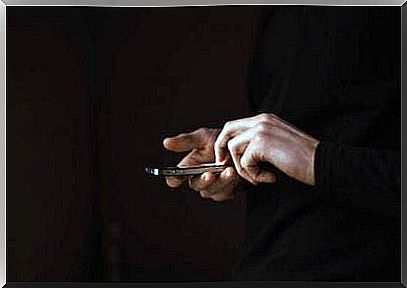Digital Bullying: 5 Tips To Detect It

Digital bullying is a big problem. People have developed a number of initiatives with the aim of preventing and combating abuse in various contexts. Much of the work has focused on school and work environment. Traditionally, face-to-face bullying occurs in the form of insults, harassment or physical aggression. As a result of the technological development we have nowadays, bullying has also evolved. Now it also exists in the form of digital bullying.
The digital world has become part of our everyday lives. We spend extremely much time on social media, we share a large part of our lives there, and we also spend time and energy getting to know other people’s lives. However, this may be a double-edged sword. What if you experience harassment over the Internet? To learn more about digital bullying and how to identify it, keep reading.
When you think of internet harassment, you may be thinking of insults or threats over message or social media. But it’s not just this. If you want to be able to detect digital bullying, you need to understand that it takes many different forms. This is the first tip.
If someone steals your identity on some social media platform, and uses it to send messages in your name and with your picture, then you are a victim of harassment. Another form of digital bullying is when someone changes and edits your public photos in an offensive way or tags your photos with all sorts of insults.
Another form of digital bullying is if someone records you or takes pictures of you, and then publish them without your consent. The person can, for example, post them on a variety of social media. In any case, you are a victim of harassment if someone uses technology to do something you find uncomfortable or offensive.

Now you understand what harassment in the digital world entails. So what should you do if you find yourself in this situation? Here’s another tip – Analyze and assess what happened. You need to reflect on how the events affect you on a personal as well as social level.
There are several possible scenarios. First of all, it may just be that it’s all an internal joke between your friends, which then does not have a major significance for you. However, it can also be that it is a situation where you feel offended, insecure and affected. This brings us to our third important tip – Tell someone else what’s going on.
If you are a minor, it is best to go to your parents or teachers. Of course, they will help you solve the problem in the best possible way. But you do not have to talk to them exclusively. You can also choose to talk to your friends or classmates who may be able to help you. They can also offer you understanding and support.
This leads us on to our fourth tip – to gather information about the situation. You should not dispose of information, no matter how inconvenient it may be. What happened? When did it happen? And how long did it last? Who is involved and what was their intention? What triggered the problem to begin with?

Being a victim of online harassment is unfair and often painful. It is crucial for you to try to find a way to stop it. This brings us to our last important tip – look for solutions and make sure to get them started. As we mentioned before, these are very complex issues. Therefore, you should not be ashamed or afraid to ask others for help.
To do this, analyze the information you have collected. You need to decide whether you can talk directly to the people involved in order to find a solution. Again, it is important to point out that you do not have to be alone about it. If you ask someone for help, they can give you the strength you need to put an end to the situation.
But if you can not find a solution to the problem, try other things. To begin with, you should warn some form of higher authority (a professor, a teacher or a boss) so that they get involved in the matter. Remember, the first step to stopping digital bullying is to detect it!









